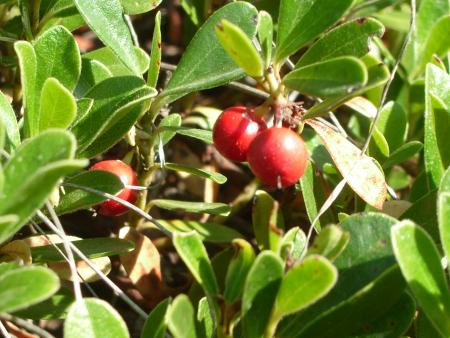
Objective:
The aim of the experimental work was to study the aerial biomass production of Arctostaphylos uva-ursi present in the Pyrenees under different environmental conditions (altitude, slope and orientation, substrate, tree cover and population abundance) and to analyse the effects of the season in which it is collected (autumn or spring), the intensity (0%, 25%, 50% and 100% of the population) and the frequency of collection on the regeneration capacity of the species, in order to be able to propose some guidelines for a sustainable collection of bearberry in the Pyrenees.
Context:
Bearberry has been widely used in Europe for antiseptic and astringent properties of the glycosides arbutin and metilarbutin that are located mainly in the leaves. For many years, this medicinal use has led to periodical harvesting of this species within the natural environment in some temperate areas. In spite of the historical use as a medicinal plant, little information about the vegetative biomass production and regenerative capacity is known, although both are affected by harvesting practices. Knowing this impact is important for preserving bearberry wild populations.
Contacts:
Roser Cristóbal Cabau, roser.cristobal@ctfc.es, http://www.ctfc.cat/
Jordi Recasens Guinjuan, jrecasens@hbj.udl.es, http://www.deptetsea.udl.cat/dept/hbj
Pere Aymerich, pere.aymerich@wanadoo.es,
Further information:
Recasens J., Ninot P., Cristóbal R., Aymerich P., 2008. Sustainable wild harvesting of Arctostaphylos uva-ursi in the Pyrenees as a conservation practice. Journal of Herbs, Spices & Medicinal Plants, Vol. 14(1-2).